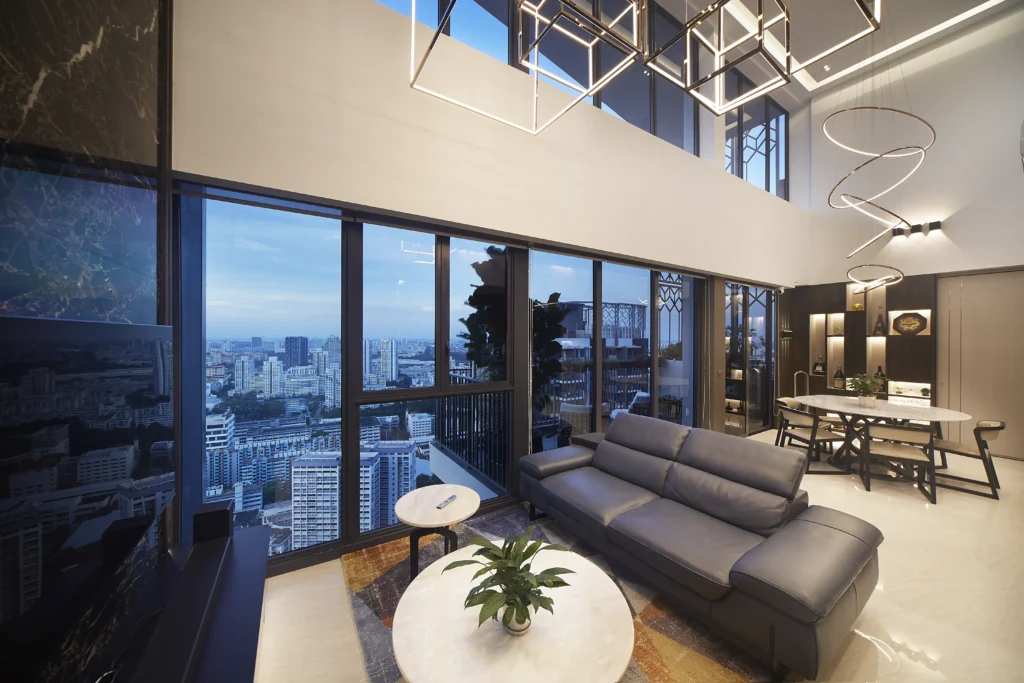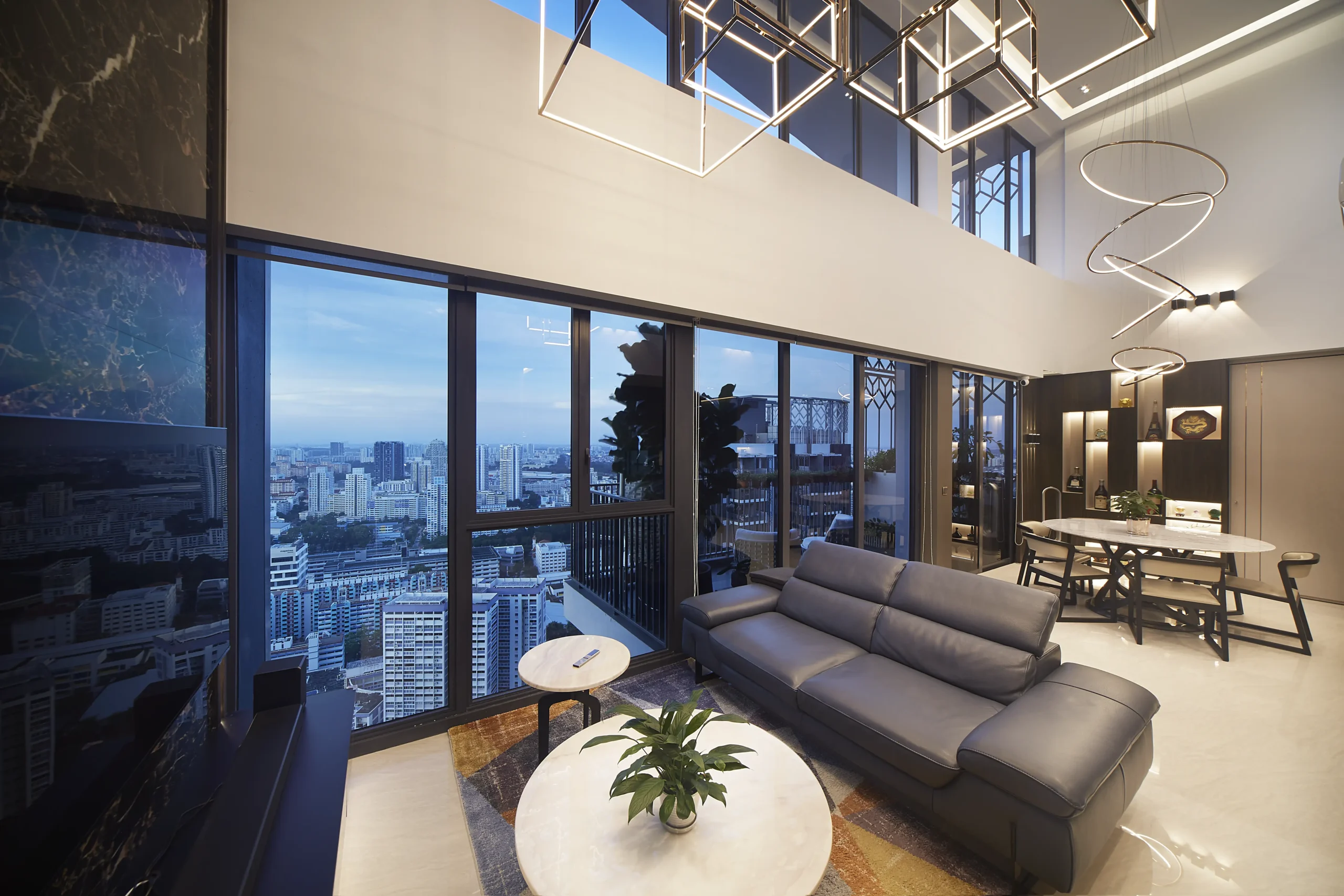What Is Sustainable House Design?
Sustainable house design refers to the process of planning, constructing, and maintaining homes that are environmentally responsible and resource-efficient throughout their lifecycle, from design to demolition. The goal is to reduce the ecological footprint by optimizing energy use, minimizing waste, and using sustainable materials.
In cities like Singapore, sustainable housing has become a priority as homeowners seek to balance modern comfort with environmental stewardship. With careful planning and innovative technologies, sustainable house design ensures long-term benefits both for occupants and the planet.
Key Principles of Sustainable House Design
1. Energy Efficiency
- Use natural lighting through skylights and large windows.
- Install energy-efficient appliances and LED lighting.
- Adopt renewable energy sources such as solar panels.
2. Water Conservation
- Implement rainwater harvesting systems.
- Use low-flow fixtures and dual-flush toilets.
- Landscape with native plants that require less watering.
3. Sustainable Materials
- Choose locally sourced and recycled materials.
- Opt for non-toxic paints, adhesives, and finishes.
- Use certified wood or bamboo for flooring and furniture.
4. Smart Design Layout
- Orient homes to maximize cross-ventilation and daylight.
- Design compact spaces to reduce material and energy demand.
- Integrate green roofs and walls for thermal regulation.
Benefits of Sustainable House Design
Aspect Benefit Energy Use Reduces utility bills by 30–50% through efficient systems Air Quality Improves indoor comfort with natural airflow and non-toxic materials Long-Term Value Increases property resale value and market appeal Environmental Impact Minimizes carbon footprint and resource waste Health & Well-being Promotes a cleaner, more comfortable living environment
How to Plan a Sustainable House (Step-by-Step)
- Assess Your Site:
Analyze sunlight, wind direction, and existing vegetation before construction.
- Set Design Goals:
Determine priorities, energy efficiency, water saving, or renewable materials.
- Engage Sustainable Architects:
Work with professionals experienced in eco-friendly projects.
- Source Responsibly:
Select materials with low embodied energy and certified sustainability labels.
- Monitor and Maintain:
Schedule regular energy audits and ensure systems like solar panels operate efficiently.
Common Features in Modern Sustainable Homes
- Passive solar design for temperature control.
- Double-glazed windows to maintain interior climate.
- Smart thermostats and lighting systems.
- Modular design for flexible space use.
- Integration with home automation and renewable energy systems.
| Aspect | Benefit |
|---|---|
| Energy Use | Reduces utility bills by 30–50% through efficient systems |
| Air Quality | Improves indoor comfort with natural airflow and non-toxic materials |
| Long-Term Value | Increases property resale value and market appeal |
| Environmental Impact | Minimizes carbon footprint and resource waste |
| Health & Well-being | Promotes a cleaner, more comfortable living environment |
How to Plan a Sustainable House (Step-by-Step)
- Assess Your Site:
Analyze sunlight, wind direction, and existing vegetation before construction.
- Set Design Goals:
Determine priorities, energy efficiency, water saving, or renewable materials.
- Engage Sustainable Architects:
Work with professionals experienced in eco-friendly projects.
- Source Responsibly:
Select materials with low embodied energy and certified sustainability labels.
- Monitor and Maintain:
Schedule regular energy audits and ensure systems like solar panels operate efficiently.
Common Features in Modern Sustainable Homes
- Passive solar design for temperature control.
- Double-glazed windows to maintain interior climate.
- Smart thermostats and lighting systems.
- Modular design for flexible space use.
- Integration with home automation and renewable energy systems.
Analyze sunlight, wind direction, and existing vegetation before construction.
Determine priorities, energy efficiency, water saving, or renewable materials.
Work with professionals experienced in eco-friendly projects.
Select materials with low embodied energy and certified sustainability labels.
Schedule regular energy audits and ensure systems like solar panels operate efficiently.
- Passive solar design for temperature control.
- Double-glazed windows to maintain interior climate.
- Smart thermostats and lighting systems.
- Modular design for flexible space use.
- Integration with home automation and renewable energy systems.
For more design inspiration, explore related concepts such as eco friendly home ideas, showcasing how sustainability can blend seamlessly with modern aesthetics.
Research Insights and Case Studies
According to the Building and Construction Authority (BCA) Singapore, energy-efficient homes can reduce energy consumption by up to 40% annually. Moreover, a 2024 survey by Green Building Council Singapore found that 78% of homeowners are now considering sustainability as a key factor when renovating or building their homes.
In a recent Artrend project, a residential redesign achieved:
- 35% reduction in cooling energy through natural ventilation,
- 20% water savings from greywater recycling, and
- Improved indoor air quality through toxin-free materials.
These outcomes demonstrate that sustainable house design not only supports the planet but also enhances comfort and cost savings for residents.

Conclusion: Build the Future with Sustainable House Design
Sustainable house design is more than a trend, it’s a long-term investment in comfort, health, and environmental responsibility. By adopting energy-efficient systems, eco-friendly materials, and smart layouts, homeowners can create spaces that are both beautiful and sustainable. To start planning your eco-friendly living space, connect with Artrend’s expert design team today and discover how we can turn your vision into reality. Contact us here to begin your sustainable home journey.
FAQs (Frequently Asked Questions)
What makes a house design sustainable?
A design is sustainable when it conserves resources, reduces energy use, and promotes healthy living through responsible materials and smart systems.
How much more does a sustainable home cost to build?
While initial costs can be 5–10% higher, the long-term savings in utilities and maintenance often offset these expenses within a few years.
Can older homes be converted into sustainable houses?
Yes. Retrofitting existing homes with insulation, LED lighting, and solar panels can significantly improve sustainability without full reconstruction.
Are sustainable materials durable?
Modern eco-materials such as bamboo, recycled concrete, and composite wood are not only durable but also low-maintenance.
Does sustainable design affect resale value?
Yes. Green-certified homes in Singapore have been shown to command 10–15% higher resale value due to their lower operational costs and health benefits.
What makes a house design sustainable?
A design is sustainable when it conserves resources, reduces energy use, and promotes healthy living through responsible materials and smart systems.
How much more does a sustainable home cost to build?
While initial costs can be 5–10% higher, the long-term savings in utilities and maintenance often offset these expenses within a few years.
Can older homes be converted into sustainable houses?
Yes. Retrofitting existing homes with insulation, LED lighting, and solar panels can significantly improve sustainability without full reconstruction.
Are sustainable materials durable?
Modern eco-materials such as bamboo, recycled concrete, and composite wood are not only durable but also low-maintenance.
Does sustainable design affect resale value?
Yes. Green-certified homes in Singapore have been shown to command 10–15% higher resale value due to their lower operational costs and health benefits.

